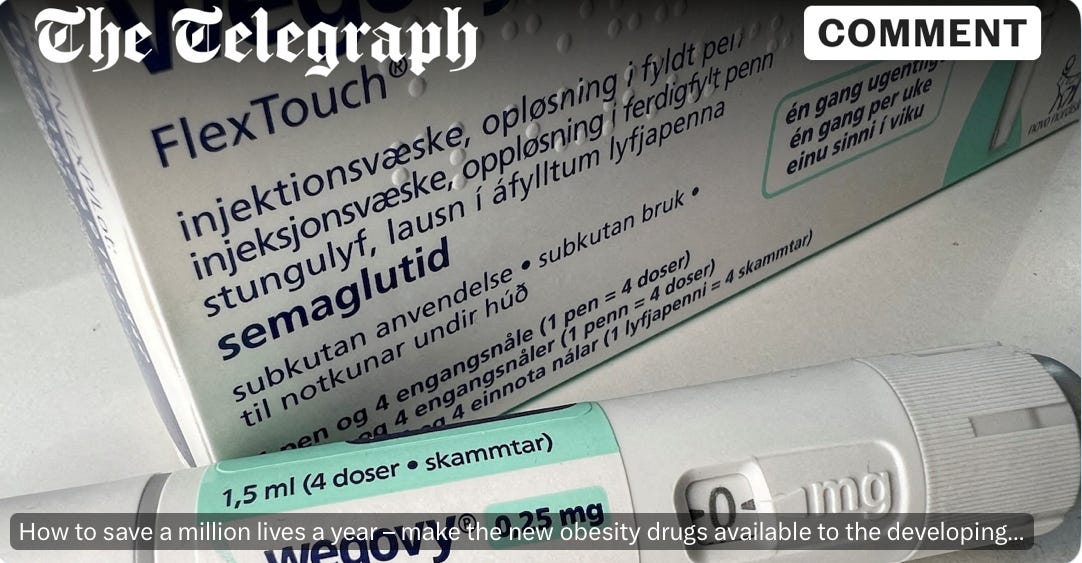More than 1 billion people worldwide live with obesity and almost two-thirds of deaths are attributed to non-communicable disease. A new class of drugs called GLP-1s — Ozempic, Wegovy, Mounjaro, and Zepbound — is revolutionizing the treatment of diabetes, obesity, and cardiovascular disease. However, at the moment, these drugs are available only in a few wealthy countries.
I recently published a preprint on medRxiv and an op-ed in The Telegraph outlining how GLP-1 drugs could save nearly a million lives annually — if they were made available worldwide.
In the medRxiv preprint (in collaboration with David Brook), we present the first global model of the impact GLP-1 drugs could have on people with diabetes, obesity, and cardiovascular disease. Our preliminary estimate shows that these drugs could save 943,000 lives per year globally, with that number potentially doubling if further applications are proven. These potential life-saving outcomes are comparable to anti-retroviral drugs (ARVs) for HIV or childhood vaccines. Yet, for this potential to be realized, we need coordinated efforts around awareness, global policies, and access.
In my Telegraph op-ed, I discuss three key bottlenecks that stand in the way of saving these lives, and how to overcome them:
1. Awareness and advocacy – Unlike ARVs for HIV, we haven’t seen global campaigns pushing for access to GLP-1 drugs, despite the enormous global burden of diabetes and obesity. A coordinated effort at the upcoming 2025 UN High-Level Meeting on Non-Communicable Diseases could change this.
2. Global policies – The World Health Organization (WHO) has not yet prequalified these drugs or added them to its Essential Medicines List, nor are they currently included in WHO’s diabetes or obesity guidelines.
3. Affordability and accessibility – These drugs are primarily available in high-income countries, and there’s no global financing structure to make them accessible worldwide. Successful models developed for HIV, malaria, TB, and other communicable diseases — such as voluntary licensing, market shaping, and innovative finance — could be applied to these noncommunicable diseases. Moreover, the global access landscape could shift once one of the GLP-1 drugs goes off patent in China and India in 2026.
These drugs are not a panacea. They should be used in concert with other proven public health measures: healthy diet and food systems, tax and regulatory measures, tobacco cessation, primary health care, and access to other life-saving drugs.
I encourage you to read the preprint and the op-ed to dive deeper into the data and the policy implications. This is a critical moment for global health, and with the right strategies, we can unlock the full potential of GLP-1 drugs to save lives on a very large scale.
You can find the preprint here:
MedRxiv Preprint: GLP-1 Drugs Could Save ~ 1 Million Lives Annually
And the op-ed here:
Telegraph Op-ed: How to Save a Million Lives a Year with Obesity Drugs





Thanks Peter for the compelling article.
I agree completely!!